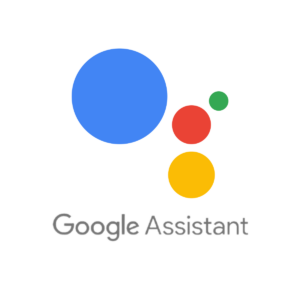AI Virtual Assistants
Virtual Assistants – Streamlining Workflows and Elevating Customer Experience
Leverage the power of AI to provide on-demand support, automate repetitive tasks, and delight customers with 24/7 availability.
Virtual Assistants are changing how businesses handle customer inquiries, manage day-to-day operations, and improve team efficiency. By combining natural language processing, machine learning, and robust conversational interfaces, these digital helpers can understand customer intent, offer relevant solutions, and learn from interactions to become more accurate over time. Through the Virtual Assistants category curated by Replace Humans, organizations of all sizes can explore AI-driven tools that deliver real-time assistance, reduce staffing costs, and scale to meet fluctuating demand.
Key Benefits of Virtual Assistants
Accelerate response times, boost satisfaction, and drive operational savings.
24/7 Availability
Unlike human agents, AI-powered Virtual Assistants can handle queries anytime—without breaks or downtime. This capability ensures customers or employees receive immediate responses, even outside regular business hours.
Reduced Operational Costs
By delegating repetitive tasks—like answering FAQs or processing routine transactions—teams can focus on higher-value projects. Fewer phone calls and support tickets translate into lower overhead while maintaining consistent service levels.
Seamless Integrations
Modern Virtual Assistants connect with CRMs, help desks, and other backend systems, pulling relevant data on the fly. This integration provides personalized responses, speeds up resolution times, and reduces manual data entry.
Consistent Branding and Messaging
Virtual Assistants adhere to predetermined guidelines and tone, ensuring consistent communication. Whether customers engage through social media, a website, or a mobile app, the messaging stays on-brand and accurate.
Scalable Support
Virtual Assistants can take on additional interactions as your company grows without requiring new hires or physical expansions. This elasticity allows you to handle seasonal spikes or special promotions seamlessly.
Notable Solutions in Virtual Assistants
Harness intelligent algorithms and conversational workflows for tailored interactions.
Voice-Enabled AI Assistants
Technologies with integrated voice recognition and natural language understanding allow users to interact hands-free. Ideal for busy professionals or industries like healthcare, these solutions streamline processes by combining speech interpretation with advanced analytics.
Conversational Chatbots
Chatbots powered by sophisticated machine learning models can interpret user intent, manage context across multiple exchanges, and escalate issues to live agents when necessary. They’re handy for eCommerce sites that guide shoppers through product selection or returns.
Multi-Channel Platforms
Some Virtual Assistants can operate across SMS, email, social media, and corporate portals, ensuring a unified user experience. This omni-channel approach helps maintain customer engagement regardless of the communication method.
Enterprise-Grade Integrations
For companies with complex workflows, specific Virtual Assistants offer deep integrations with project management tools, ERPs, or analytics software. Automating data retrieval and updates across departments maximizes efficiency and visibility.
Implementing Virtual Assistants in Your Strategy
Define clear objectives, select the best platform, and train your AI agents for top-tier performance.
Assess Your Needs
Identify key areas—like customer service or internal helpdesks—where AI-powered automation can make the most significant difference. Clear goals set the stage for measuring impact and ROI.
Choose a Suitable Assistant
Review functionality, scalability, and integration capabilities to find the right match for your specific business model. Consider factors like multilingual support, authentication methods, and ongoing maintenance costs.
Design and Deploy
Map out conversation flows, FAQs, and escalation protocols. Provide representative data to train your Virtual Assistant, then refine it through real-world interactions. A well-structured deployment ensures smoother adoption and a better user experience.
Monitor and Optimize
Track performance metrics like response accuracy, average handling time, and user satisfaction. Use analytics to improve understanding of customer queries, update training data, and continuously refine your Virtual Assistant’s abilities.
Future Outlook
Prepare for more advanced interactions that blend human empathy with machine precision.
As AI models evolve, Virtual Assistants will become increasingly adept at understanding context, sentiment, and emotional tone. Upcoming advances may include augmented reality interfaces, predictive capabilities that anticipate user needs before they ask, and deeper integrations with IoT devices. Businesses that invest in virtual assistants will now be positioned to deliver robust, intelligent experiences in a future where conversational AI is the norm.
Embrace AI-powered Virtual Assistants to modernize your operations, enhance customer satisfaction, and maintain a competitive edge.
By exploring the Virtual Assistants category on Replace Humans, you can uncover AI-driven tools that handle inquiries around the clock, free up staff for strategic initiatives, and ensure consistent support across multiple channels. From voice-enabled platforms to enterprise chatbots, these solutions simplify workflow management, improve customer loyalty, and future-proof your organization in a rapidly shifting digital landscape.
Showing all 5 results
-

Amazon Alexa – Voice AI for Smart Homes and Entertainment
Try it -

Apple Siri – Intelligent Voice Assistant for Apple Devices
Try it -

ChatGPT Enterprise – Advanced AI Virtual Assistant for Business
Try it -

Google Assistant – Voice-Activated Virtual Assistant for All Devices
Try it -

Microsoft Copilot – AI Assistant for Microsoft 365
Use it
Virtual Assistants – Streamlining Workflows and Elevating Customer Experience
Leverage the power of AI to provide on-demand support, automate repetitive tasks, and delight customers with 24/7 availability.
Virtual Assistants are changing how businesses handle customer inquiries, manage day-to-day operations, and improve team efficiency. By combining natural language processing, machine learning, and robust conversational interfaces, these digital helpers can understand customer intent, offer relevant solutions, and learn from interactions to become more accurate over time. Through the Virtual Assistants category curated by Replace Humans, organizations of all sizes can explore AI-driven tools that deliver real-time assistance, reduce staffing costs, and scale to meet fluctuating demand.
Key Benefits of Virtual Assistants
Accelerate response times, boost satisfaction, and drive operational savings.
24/7 Availability
Unlike human agents, AI-powered Virtual Assistants can handle queries anytime—without breaks or downtime. This capability ensures customers or employees receive immediate responses, even outside regular business hours.
Reduced Operational Costs
By delegating repetitive tasks—like answering FAQs or processing routine transactions—teams can focus on higher-value projects. Fewer phone calls and support tickets translate into lower overhead while maintaining consistent service levels.
Seamless Integrations
Modern Virtual Assistants connect with CRMs, help desks, and other backend systems, pulling relevant data on the fly. This integration provides personalized responses, speeds up resolution times, and reduces manual data entry.
Consistent Branding and Messaging
Virtual Assistants adhere to predetermined guidelines and tone, ensuring consistent communication. Whether customers engage through social media, a website, or a mobile app, the messaging stays on-brand and accurate.
Scalable Support
Virtual Assistants can take on additional interactions as your company grows without requiring new hires or physical expansions. This elasticity allows you to handle seasonal spikes or special promotions seamlessly.
Notable Solutions in Virtual Assistants
Harness intelligent algorithms and conversational workflows for tailored interactions.
Voice-Enabled AI Assistants
Technologies with integrated voice recognition and natural language understanding allow users to interact hands-free. Ideal for busy professionals or industries like healthcare, these solutions streamline processes by combining speech interpretation with advanced analytics.
Conversational Chatbots
Chatbots powered by sophisticated machine learning models can interpret user intent, manage context across multiple exchanges, and escalate issues to live agents when necessary. They’re handy for eCommerce sites that guide shoppers through product selection or returns.
Multi-Channel Platforms
Some Virtual Assistants can operate across SMS, email, social media, and corporate portals, ensuring a unified user experience. This omni-channel approach helps maintain customer engagement regardless of the communication method.
Enterprise-Grade Integrations
For companies with complex workflows, specific Virtual Assistants offer deep integrations with project management tools, ERPs, or analytics software. Automating data retrieval and updates across departments maximizes efficiency and visibility.
Implementing Virtual Assistants in Your Strategy
Define clear objectives, select the best platform, and train your AI agents for top-tier performance.
Assess Your Needs
Identify key areas—like customer service or internal helpdesks—where AI-powered automation can make the most significant difference. Clear goals set the stage for measuring impact and ROI.
Choose a Suitable Assistant
Review functionality, scalability, and integration capabilities to find the right match for your specific business model. Consider factors like multilingual support, authentication methods, and ongoing maintenance costs.
Design and Deploy
Map out conversation flows, FAQs, and escalation protocols. Provide representative data to train your Virtual Assistant, then refine it through real-world interactions. A well-structured deployment ensures smoother adoption and a better user experience.
Monitor and Optimize
Track performance metrics like response accuracy, average handling time, and user satisfaction. Use analytics to improve understanding of customer queries, update training data, and continuously refine your Virtual Assistant’s abilities.
Future Outlook
Prepare for more advanced interactions that blend human empathy with machine precision.
As AI models evolve, Virtual Assistants will become increasingly adept at understanding context, sentiment, and emotional tone. Upcoming advances may include augmented reality interfaces, predictive capabilities that anticipate user needs before they ask, and deeper integrations with IoT devices. Businesses that invest in virtual assistants will now be positioned to deliver robust, intelligent experiences in a future where conversational AI is the norm.
Embrace AI-powered Virtual Assistants to modernize your operations, enhance customer satisfaction, and maintain a competitive edge.
By exploring the Virtual Assistants category on Replace Humans, you can uncover AI-driven tools that handle inquiries around the clock, free up staff for strategic initiatives, and ensure consistent support across multiple channels. From voice-enabled platforms to enterprise chatbots, these solutions simplify workflow management, improve customer loyalty, and future-proof your organization in a rapidly shifting digital landscape.
